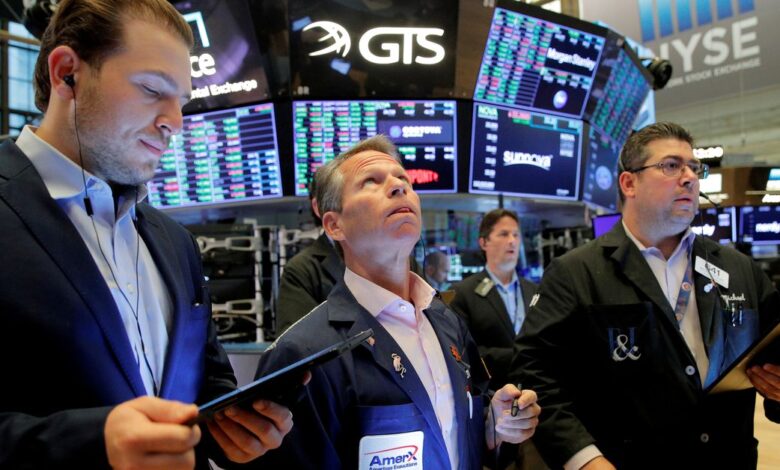Analysis: Buying the dip? Not so fast, some Wall St banks say

NEW YORK, Oct 6 (Reuters) – Scooping up shares after pullbacks has been a profitable guess for traders over the previous decade however some Wall Avenue strategists are pointing to a mess of dangers that would include leaping into equities after their newest tumble.
The S&P 500 has notched 25 complete pullbacks of not less than 5% for the reason that begin of 2012, in line with Ryan Detrick, chief market strategist at LPL Monetary. Over that point, the index has gained greater than 240%, bolstering the case for traders prepared to step in throughout episodes of weak spot.
Dip shopping for has already been in proof. The S&P 500 bounced again over 1% after Monday, when a pointy sell-off noticed the S&P 500 finish greater than 5% beneath its closing document excessive, in its greatest drawdown to this point in 2021. The consumers included retail traders, who’ve bought a median of $1.2 billion in shares per day to this point this week, up from their common, in line with Vanda Analysis.
Some fear, nevertheless, that purchasing the most recent dip could include extra near-term dangers than earlier than as traders face a bevy of headwinds, from the looming unwind of the Federal Reserve’s $120 billion a month authorities bond-buying program to a protracted battle amongst lawmakers to boost the U.S. debt ceiling.
Analysts at BofA International Analysis on Tuesday cautioned that “the coast seems removed from clear” because the Fed prepares to wind down the simple cash insurance policies that had helped the market double from final yr’s lows as early as August. BofA’s goal on the S&P 500 is 4,250, some 2% beneath Tuesday’s shut.
The dangers of a extra hawkish Fed additionally involved analysts at Morgan Stanley, who on Monday mentioned the S&P 500 may fall as a lot as 20% if the financial system and earnings “cool off” because the Fed tightens.
Shawn Snyder, head of funding technique at Citi US Wealth Administration, mentioned a nasty struggle amongst U.S. lawmakers to boost the nation’s debt ceiling or throw the nation into default is at the moment the important thing near-term threat equities face.
“The buy-the-dip technique nonetheless works however there (are) very particular issues which might be lingering that should be cleared first,” Snyder mentioned.
Further dangers analysts run the gamut from a current surge in power costs to worries over the meltdown of closely indebted Chinese language property developer China Evergrande Group. The S&P 500 is up 15.7% to this point this yr.
Shopping for the dip has “actually labored for folks during the last 10 years,” mentioned JJ Kinahan, chief market strategist at TD Ameritrade in Chicago. Nonetheless, “in some unspecified time in the future issues cease working, particularly when folks do them time after time.”
One situation outlined by Morgan Stanley’s strategists sees the S&P 500 falling by about 10% because the Fed tightens financial coverage on account of rising inflationary pressures. In a second situation, the financial system and earnings gradual because the Fed tightens, resulting in a 20% swoon.
“Backside line: quicker tapering with a larger deceleration in development implies a larger than 10% correction,” Morgan Stanley analysts mentioned.
Regardless of these worries, nevertheless, historic proof reveals {that a} market powered by robust momentum tends to maintain rising. The S&P 500 has notched a constructive fourth quarter almost 80% of the time in years throughout which it has climbed greater than 12.5% within the first 9 months, in line with LPL’s Detrick, delivering a median fourth-quarter acquire of 5.2%.
Seasonal traits additionally may present causes to purchase sooner relatively than later. Whereas September lived as much as its historic popularity of being the weakest month with a 4.8% decline, October is historically stronger, with the seventh-highest common good points for the S&P 500 since 1950, in line with the Inventory Dealer’s Almanac.
November ranks second in month-to-month efficiency, with the index rising 1.7% on common, and December third, with equities rising 1.5%, in line with the almanac.
Goldman Sachs is among the many banks calling for extra good points. The financial institution’s strategist earlier this week issued a word with a year-end goal of 4,700 for the S&P 500, about 8% above the place the index closed on Tuesday.
Reporting by Lewis Krauskopf and Sinéad Carew; Enhancing by Ira Iosebashvili and Nick Zieminski
:





